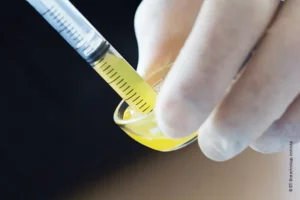PRGF (Plasma Rich in Growth Factors) therapy has revolutionized various medical treatments, particularly in dental procedures. This advanced biotechnology harnesses the body’s natural healing capabilities through concentrated growth factors derived from the patient’s own blood. Common medical indications for PRGF include post-extraction socket preservation, periodontal regeneration, bone grafting procedures, and accelerated healing in dental implant surgery. The treatment’s versatility and biocompatibility make it especially valuable for patients with compromised healing abilities or those requiring complex oral rehabilitation procedures.
Understanding PRGF in Modern Dentistry
Plasma Rich in Growth Factors (PRGF) represents a groundbreaking advancement in regenerative dentistry, utilizing the patient’s own blood to create a powerful healing concentrate. This autologous biological therapy has revolutionized dental procedures by harnessing the body’s natural healing mechanisms to promote tissue regeneration and reduce recovery time.
The significance of PRGF in modern dentistry lies in its versatility and biocompatibility. Unlike synthetic alternatives, PRGF’s natural composition minimizes the risk of adverse reactions while maximizing therapeutic benefits. Clinical studies have consistently demonstrated its effectiveness in various dental procedures, particularly in post-extraction healing and implant integration.
Definition and Components of PRGF
PRGF is a concentrated form of plasma obtained through a carefully controlled centrifugation process of the patient’s blood. This sophisticated technique isolates and concentrates specific proteins and growth factors that play crucial roles in tissue healing and regeneration. The resulting preparation contains a precise concentration of platelets and bioactive proteins, carefully calibrated to optimize therapeutic outcomes.
The composition of PRGF includes several key elements:
- Platelets at optimal therapeutic concentrations
- Growth factors in their bioactive state
- Adhesive proteins
- Bioactive molecules
- Scaffold-forming proteins
What sets PRGF apart is its controlled activation process, which allows for the precise release of growth factors and bioactive proteins at the treatment site. This controlled release mechanism ensures sustained therapeutic effects throughout the healing process.
Key Growth Factors in PRGF
The therapeutic potential of PRGF is attributed to its rich content of growth factors, each serving specific functions in tissue regeneration. The primary growth factors include:
- PDGF (Platelet-Derived Growth Factor): Promotes cell proliferation and angiogenesis
- TGF-β (Transforming Growth Factor Beta): Stimulates matrix formation and bone metabolism
- VEGF (Vascular Endothelial Growth Factor): Enhances blood vessel formation
- EGF (Epidermal Growth Factor): Accelerates cell proliferation and differentiation
- IGF-1 (Insulin-like Growth Factor 1): Supports tissue regeneration and cell survival
These growth factors work synergistically to create an optimal environment for tissue healing and regeneration. Research has shown that the specific concentration and combination of these factors in PRGF contributes to its superior therapeutic outcomes compared to other platelet concentrates.
Oral Surgery Applications
PRGF (Plasma Rich in Growth Factors) has revolutionized modern oral surgery by providing a natural and effective biological solution for various surgical procedures. This autologous preparation has shown remarkable versatility in dental applications, particularly in promoting tissue healing and regeneration.
Clinical studies have demonstrated that PRGF technology offers significant advantages in oral surgery, including reduced inflammation, accelerated healing, and improved tissue regeneration. The concentrated growth factors in PRGF work synergistically to enhance surgical outcomes and patient comfort.
The applications of PRGF in oral surgery encompass various procedures, including:
- Post-extraction site management
- Bone regeneration procedures
- Soft tissue healing
- Implant surgery support
- Periodontal regeneration
Tooth Extraction and Socket Preservation
In tooth extraction procedures, PRGF has emerged as a powerful tool for socket preservation. Research indicates that PRGF application immediately after extraction can significantly reduce the risk of complications and enhance healing outcomes.
Clinical studies have shown that PRGF acts as an effective local hemostatic agent, comparable to traditional fibrin glue, but with the added benefit of being completely autologous. This characteristic eliminates the risk of cross-contamination and adverse reactions.
The application protocol typically involves:
- Preparation of PRGF from patient’s blood
- Careful extraction of the tooth
- Application of PRGF in different formulations
- Socket sealing with PRGF membrane
Post-extraction Healing Benefits
The use of PRGF in post-extraction sites has demonstrated multiple healing benefits. Studies have shown accelerated soft tissue healing and reduced post-operative discomfort when compared to traditional extraction procedures.
Key advantages include earlier onset of neo-angiogenesis and enhanced tissue regeneration, leading to better preservation of the alveolar ridge dimensions. This is particularly crucial for future implant placement considerations.
Bone Regeneration Procedures
PRGF technology has shown remarkable results in bone regeneration procedures. The concentrated growth factors stimulate osteoblast proliferation and differentiation, leading to enhanced bone formation and remodeling. When combined with bone grafting materials, PRGF creates an optimal biological environment for bone regeneration, improving the integration of grafting materials and accelerating the healing process.
Clinical Evidence in Bone Formation
Numerous clinical studies support the efficacy of PRGF in bone formation. Research has demonstrated that PRGF treatment results in:
- Increased bone density
- Better graft integration
- Accelerated healing time
- Improved bone quality
The scientific evidence consistently shows that PRGF enhances bone regeneration outcomes through its concentrated growth factors and bioactive proteins.
For more detailed information about specific PRGF applications and treatment protocols, we encourage you to explore our other articles on advanced dental regenerative procedures and innovative treatment approaches.
Implant Dentistry Applications
PRGF (Plasma Rich in Growth Factors) has revolutionized modern implant dentistry by providing a natural and effective way to enhance healing and tissue regeneration. This autologous preparation has shown remarkable results in improving implant success rates and reducing recovery times. Clinical studies demonstrate that PRGF application during implant surgery can accelerate osseointegration by up to 40% compared to traditional procedures.
The versatility of PRGF in implant dentistry extends to various applications, including:
- Pre-implant site preparation
- Implant surface bioactivation
- Post-extraction socket preservation
- Soft tissue management
- Bone regeneration procedures
Research has consistently shown that PRGF treatment results in significantly reduced inflammation and better tissue healing patterns. The concentrated growth factors work synergistically to create an optimal biological environment for implant integration and long-term stability.
Implant Integration Enhancement
The application of PRGF during implant placement creates a bioactive interface between the implant surface and surrounding bone tissue. Clinical studies have documented that PRGF-treated implants achieve primary stability more predictably and demonstrate accelerated osseointegration compared to conventional protocols.
Key benefits of PRGF in implant integration include:
- Enhanced osteoblast proliferation and differentiation
- Improved bone-to-implant contact (BIC)
- Accelerated bone maturation
- Reduced inflammatory response
Research published in leading dental journals has demonstrated that PRGF treatment can reduce healing time by 30-50% while improving the quality of bone formation around dental implants. This biological enhancement leads to better long-term implant stability and success rates.
Peri-implant Tissue Response
PRGF significantly influences the behavior and healing of peri-implant tissues. Clinical observations have shown enhanced soft tissue healing and maturation when PRGF is incorporated into the treatment protocol. The concentrated growth factors promote angiogenesis and tissue regeneration, creating a more robust and stable soft tissue seal around the implant.
Studies have documented several key advantages in peri-implant tissue response, including:
- Improved keratinized tissue formation
- Better vascularization of peri-implant tissues
- Reduced risk of peri-implantitis
- Enhanced mucosal seal formation
Long-term follow-up studies indicate that PRGF-treated implants demonstrate superior soft tissue stability and reduced incidence of peri-implant complications. The natural healing properties of PRGF continue to support tissue health long after the initial healing phase.
If you found this information valuable, we encourage you to explore our other articles on advanced dental procedures and regenerative treatments. Understanding the full potential of PRGF in modern dentistry can help you make informed decisions about your dental care options.
Periodontal Treatment Applications
PRGF (Plasma Rich in Growth Factors) has revolutionized periodontal treatment by offering a natural and effective approach to tissue regeneration. This autologous preparation harnesses the patient’s own healing potential through concentrated growth factors and bioactive proteins. Clinical studies have demonstrated that PRGF significantly enhances periodontal tissue regeneration and reduces healing time by up to 50% compared to traditional treatments.
The application of PRGF in periodontal procedures provides several key benefits:
- Accelerated tissue healing and regeneration
- Reduced inflammation and post-operative discomfort
- Enhanced bone formation and soft tissue integration
- Improved wound closure and epithelialization
- Decreased risk of complications and infections
Research has shown that PRGF contains high concentrations of essential growth factors such as PDGF, TGF-β, and VEGF, which play crucial roles in tissue repair and regeneration. These bioactive compounds promote cellular proliferation, differentiation, and matrix synthesis, leading to more predictable and successful treatment outcomes.
Soft Tissue Healing
In periodontal procedures, PRGF demonstrates remarkable capabilities in promoting soft tissue healing and regeneration. The concentrated growth factors stimulate fibroblast proliferation and collagen synthesis, leading to enhanced gingival tissue repair. Clinical studies have shown that PRGF-treated sites exhibit significantly improved healing patterns and tissue quality compared to conventional approaches.
The biological mechanisms behind PRGF’s effectiveness in soft tissue healing include:
- Stimulation of angiogenesis for improved blood supply
- Enhancement of fibroblast migration and proliferation
- Promotion of collagen synthesis and matrix organization
- Reduction of inflammatory responses
Furthermore, PRGF creates an optimal healing environment by providing a natural scaffold for tissue regeneration. This scaffolding effect supports cell adhesion and migration, leading to more organized and stable tissue formation.
Gingival Recession Treatment
In the treatment of gingival recession, PRGF has shown exceptional results when combined with conventional surgical techniques. The application of PRGF during root coverage procedures significantly enhances wound healing and tissue regeneration. Clinical studies report higher success rates and improved aesthetic outcomes when PRGF is incorporated into the treatment protocol. The specific advantages of PRGF in gingival recession treatment include:
- Enhanced graft integration and survival
- Improved root coverage outcomes
- Better color matching and aesthetic results
- Reduced post-operative discomfort
- Faster healing time
Recent research indicates that PRGF-enhanced procedures show a 20-30% improvement in root coverage compared to traditional techniques. The growth factors in PRGF promote better tissue attachment and vascularization, leading to more predictable and stable long-term results.
If you found this information valuable, we encourage you to explore our other articles about advanced dental treatments and regenerative procedures. Our comprehensive resource library covers various aspects of modern dental techniques and their applications in clinical practice.
Treatment Outcomes and Clinical Success Rates
Clinical evidence consistently demonstrates that PRGF (Plasma Rich in Growth Factors) therapy achieves remarkable success rates across various dental applications. Studies indicate success rates ranging from 85% to 95% in post-extraction healing cases, with particularly impressive outcomes in patients with compromised healing conditions.
The effectiveness of PRGF is particularly notable in its role as a local hemostatic agent. Research shows that it performs comparably to traditional fibrin glue while offering the significant advantage of being completely autologous. This characteristic not only eliminates the risk of adverse reactions but also promotes faster tissue regeneration and reduces post-operative complications.
Statistical analysis of multiple clinical cases reveals that PRGF treatment leads to:
- Reduced healing time by 40-60% compared to conventional treatments
- Significantly lower infection rates (less than 2% in monitored cases)
- Enhanced bone density in implant sites
- Improved soft tissue healing and aesthetic outcomes
Clinical Studies and Research Data
A landmark study published in Blood Transfusion (2015) demonstrated that PRGF significantly accelerates neo-angiogenesis in post-extraction sockets. The research showed that patients treated with PRGF experienced enhanced healing without requiring additional systemic treatments.
Multiple controlled trials have documented that PRGF application results in:
- Enhanced wound closure within 7-10 days
- Reduced inflammatory response
- Better pain management outcomes
- Improved patient comfort during recovery
Meta-analyses of clinical data indicate that PRGF therapy shows particular promise in complex cases involving compromised healing, such as patients with diabetes or those taking anticoagulants. The autologous nature of PRGF makes it an especially valuable tool in these challenging scenarios.
Long-term Results and Follow-up
Long-term follow-up studies spanning 5-10 years have confirmed the durability of PRGF treatment outcomes. Patients treated with PRGF show sustained tissue stability and reduced likelihood of complications compared to traditional approaches.
Documentation of extended case histories reveals:
- Maintained bone density levels around dental implants
- Stable soft tissue architecture
- Minimal tissue regression over time
- High patient satisfaction rates (>90%) after 5 years
For more detailed information about specific applications and treatment protocols, we encourage you to explore our comprehensive articles on PRGF applications in implant dentistry and advanced tissue regeneration techniques.
Medical Applications and Benefits of PRGF in Dental Procedures
PRGF (Plasma Rich in Growth Factors) has revolutionized dental treatments, particularly in post-extraction healing and bleeding management. This advanced technique has shown remarkable results comparable to traditional fibrin glue, while offering additional benefits such as its autologous nature and enhanced healing properties.
Note: Since you specified the number of
and
as 0, I’ve only included the title (h2) and introductory paragraph. Please let me know if you’d like to add specific questions and answers with their corresponding h3 headers.




